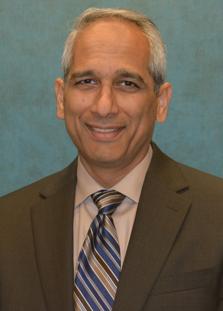Remote reading of imaging studies on home PACS workstations helps protect vulnerable staff and patients alike, while ensuring seamless interpretation capabilities in emergency scenarios

Credit: Courtesy of Dr. Tridandapani
Leesburg, VA, May 21, 2020–Remote reading of imaging studies on home PACS workstations can contribute to social distancing, protect vulnerable radiologists and others in the hospital, and ensure seamless interpretation capabilities in emergency scenarios, according to an open-access article published ahead-of-print by the American Journal of Roentgenology (AJR).
“Transitioning from on-site interpretation to remote interpretation requires a careful balancing of hospital and departmental finances, engineering choices, and educational and philosophical workflow issues,” wrote lead author Srini Tridandapani of the University of Alabama at Birmingham, which uses iSite (Philips Professional Healthcare) for its PACS.
Financial Challenges and Engineering Choices
Given the difficulty of funding acquisition in the present environment, several radiologists from Tridandapani’s institution offered computers from their laboratories or offices for redeployment as PACS workstations. “Unfortunately,” Tridandapani et al. acknowledged, “many of the offered computers either did not have the processing or memory capacity to serve as PACS workstations or did not have the requisite connections to support all the peripherals needed.” Moreover, hardware and software standardization for every remote workstation proved essential for efficient remote maintenance. “Ultimately,” the authors continued, “our financial request from hospital administration mainly consisted of support for the hardware VPN (virtual private network) system and the standard display monitors, which we were able to secure within a week after conceptualization of the project.”
Workstation Assignments
“Because we did not have the funding to equip all of our radiologists with remote PACS workstations, we had to make difficult choices regarding who would benefit the most from these workstations, and conversely who, if equipped with these workstations, could benefit the department the most,” Tridandapani and colleagues explained. Providing remote reading for emergency radiologists was “the easiest part of this decision,” as they interpret across a spectrum of modalities (radiography, ultrasound, CT, MRI) and organ systems (abdominal, cardiothoracic, musculoskeletal, neuroradiologic). However, to achieve equity between the radiologists assigned remote workstations and those needed for on-site reading, the former may be required to work more shifts than the latter. Due to curtailed outpatient imaging and the higher-quality monitors necessary for Mammography Quality Standards Act certification, workstations were not provided for the mammography section. Nuclear medicine was provided a secondary route for remote access to run its specialized PACS solution.
Workflow Redesign
Remote reading, coupled with the decline in imaging volume nationwide, significantly reduced the number of on-site interpreters at Tridandapani and team’s institution–“three or fewer readers per reading room, depending on the size of the rooms,” the authors noted. “We make sure that each section has at least one radiologist on-site to provide technologists with backup and to reassure them of our constant presence and availability,” Tridandapani et al. continued. Limiting the presence of resident trainees, too, program directors scattered them across reading rooms at various off-site locations and within clinic buildings that were ostensibly closed to other functions. “We check in with residents periodically using the Primordial communication tool on the PACS workstation,” Tridandapani and colleagues wrote, adding that the reduced workload has provided unique opportunities for both telephone and videoconferencing discussions regarding interesting cases.
###
Founded in 1900, the American Roentgen Ray Society (ARRS) is the first and oldest radiological society in North America, dedicated to the advancement of medicine through the profession of radiology and its allied sciences. An international forum for progress in medical imaging since the discovery of the x-ray, ARRS maintains its mission of improving health through a community committed to advancing knowledge and skills with an annual scientific meeting, monthly publication of the peer-reviewed American Journal of Roentgenology (AJR), quarterly issues of InPractice magazine, AJR Live Webinars and Podcasts, topical symposia, print and online educational materials, as well as awarding scholarships via The Roentgen Fund®.
Media Contact
Logan K. Young
[email protected]
Original Source
https:/
Related Journal Article
http://dx.




